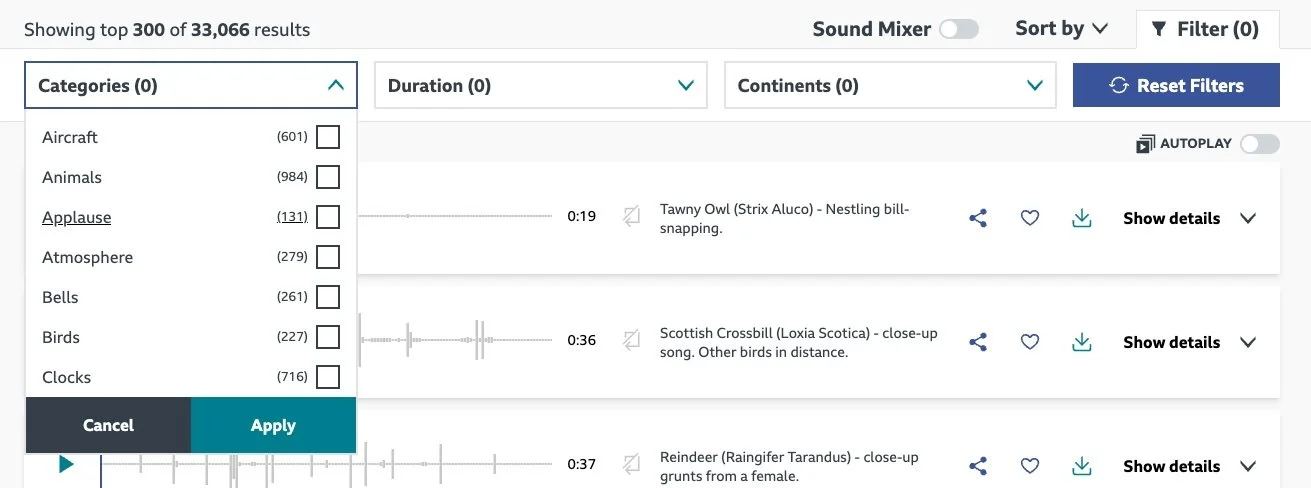Resource: BBC Sound Effects
I was reminded today by dear friend and colleague, Robin Hodson, about the incredible online audio archive that was created by the BBC. It is a PERFECT resource for music educators and their students. Why? Sometimes the right sound effect can completely transform a student project. Whether it's the crash of thunder in a suspenseful podcast, the rattle of a train in a short film, or the bubbling of a rainforest in an electronic composition, sound effects breathe life into creative work - like podcasts or film scores. Let me introduce you to the BBC Sound Effects Archive. If you haven’t visited https://sound-effects.bbcrewind.co.uk/ yet, you should. This incredible site offers access to over 33,000 sound effects from the BBC’s legendary archive—and yes, they’re FREE to use for educational and personal, non-commercial projects. It’s an incredible collection of audio clips for anyone interested in music production, media composition, or storytelling.
Navigating the Archive
The site itself is clean and simple. Here are a few key tips that can help you and your students get the most out of it.
Start with the search bar at the top of the page. It’s the fastest way to find specific sounds. Typing in a single keyword like “ocean,” “train,” or “crowd” will yield dozens—sometimes hundreds—of results. If you’re not sure what to look for, try a broader term like “weather” or “animals” and let the results guide you. You can refine your search further by using quotation marks for exact phrases or combining keywords (e.g., “car horn” or “dog barking”).
Each result includes a short title and description, usually with location information or context. For example, “Rainfall on a tin roof, Australia” or “Old wooden door creaking, indoors.” This is especially helpful for students working on projects that require geographical or cultural specificity.
When you click the play button, the sound preview loads instantly in the browser—no need to download just to test. Once you find the right sound, click the download icon on the far right of the listing. This downloads a high-quality, uncompressed .WAV file that can be imported directly into most DAWs, video editors, or presentation tools. Files are ready to go, with no need to convert or rename them.
Want to explore without searching? Scroll down to the “Explore All” section, where sounds are organized by category. Categories range from the straightforward (“Aircraft,” “Tools,” “Water”) to the wonderfully specific (“Farmyard Sounds,” “Household Appliances,” “Leisure Activities”). Clicking on a category brings up every file tagged with that theme, making it a fantastic discovery tool for younger students or beginners who don’t yet have the vocabulary for precise searches.
If you want to keep things simple for students, consider curating a list of links to specific effects ahead of time, or assign them a theme and challenge them to explore and select sounds that fit. The website is also fully functional on Chromebooks and tablets, making it ideal for use in 1:1 classrooms or remote learning settings.
Here are three great ways to bring the BBC Sound Effects Library into your classroom:
Film Scoring Projects
Assign students a short silent film or animation—something in the public domain works great—and challenge them to add music and sound effects to match the scene. This teaches not only timing and cueing but also mood creation and thematic development. The BBC archive has everything from background ambiances to spot effects like footsteps, glass breaking, or vintage car horns—perfect for building immersive scenes. At the moment, YuStudio is the ONLY online DAW that incorporates video.
Podcasting
Students love telling stories, and podcasting is a medium they already understand as listeners. Have them write and record their own podcast episodes—news reports, fictional stories, historical recreations, or even interviews—and use BBC sound effects to enhance the narrative. Whether it’s background street noise for a scene set in London or the clatter of dishes in a café, the sound design possibilities are endless.
Electronic Composition and Sound Collage
For students working in DAWs like Soundtrap or YuStudio, these sound effects can become instruments themselves. Challenge them to create a piece using only sound effects as source material—turning train engines into bass rhythms, dog barks into snare hits, or rain into ambient textures. This builds critical listening and audio manipulation skills, while also showing that music doesn’t have to start with traditional notes.
The BBC Sound Effects Archive is more than just a sound library—it’s a great resource for finding audio clips for all kinds of student projects. For music educators looking to infuse creativity and real-world relevance into their curriculum, this is DEFINITELY a resource you should bookmark. Encourage your students to explore it, experiment with it, and most importantly, create with it. You'll be amazed at what they come up with.



